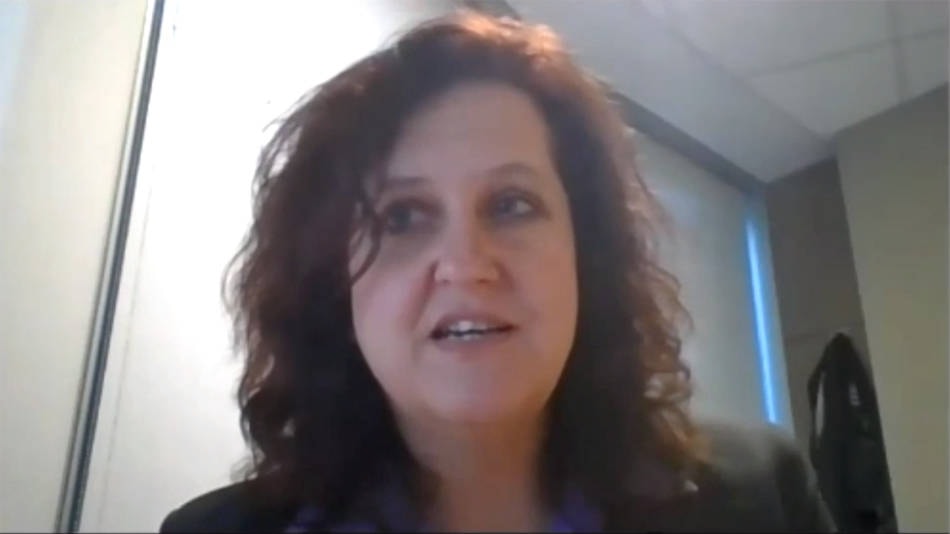Never before has a State of the Island Economic Report come with quite so much uncertainty.
Vancouver Island Economic Alliance’s three-day virtual summit concluded Thursday night with the release of the report, presented by MNP senior economist Susan Mowbray.
She said her expectation is that the effects of the pandemic are “erasing all the growth we’ve seen” over the last three or four years and she talked about the uncertainty around economic recovery.
“When we’re talking about uncertain, we’re not just talking about the upside, we’re also talking about the downside…” Mowbray said. “There’s too much uncertainty for us to really see what the clear path is out of this for many sectors.”
She said economists can look at past recessions such as 1981 and 2008 and learn from history, but said COVID-19 is not a typical crisis event “and the recovery from it is not going to be typical, either.” She said the pandemic has created effects that are broader than economic impacts, mentioning social and mental health impacts as examples. Consumer habits have changed, with people buying more groceries and shopping online, while entertainment and travel spending has dropped.
“At the core of this is the decisions that individuals make and how people respond, and people respond differently,” Mowbray said.
Even though British Columbia is seeing a second wave of COVID-19 cases, Mowbray believes that “the bottom was hit” in May and anything after that has been part of the recovery.
“The question is, how long does the recovery take to get us back to where we were? And that could be years…” she said. “If we go into additional restrictions, that’s going to push us backwards again and it’s going to prolong whatever the recovery is and for some businesses, that will be the end of them.”
The hardest-hit sector has been tourism, as the economic report found that ferry travel this year is down 51 per cent, and between April and July, airport traffic was down 82-97 per cent, hotel occupancy was down 51-81 per cent and room rates were down 34-54 per cent.
Mowbray said there’s a need to pivot to a local market as an interim step and then a regional market, but she noted that Canadians spend less than international tourists when they travel within Canada.
“The reality is that things are not going to improve for tourism businesses in any meaningful way until travel restrictions are eased and borders are re-opened,” Mowbray said. “And even then, it might take some time for people to start travelling again.”
RELATED: Island economic summit panellists discuss sustainability based on ‘doughnut’ model
RELATED: Prime minister greets Vancouver Island economic summit attendees
Another sector that has faced challenges on Vancouver Island has been forestry, as production and employment levels continue to decline. The report noted that the eight-month strike at Western Forest Products mills affected 3,000 workers and Mowbray said harvesting activity stalled and shipments and manufacturing were down. Lumber prices “increased significantly” this past summer, the report found, as home renovations and construction created a shortage of supply, but Mowbray said prices have levelled off.
“Prices will come down, but they’re not going to be as low as they were in 2018-19 and they’re probably going to be at a more sustainable level,” she said.
However, with the Island’s timber supply issues combined with the ongoing softwood lumber dispute, Mowbray sees forestry as a “very low-growth” industry.
Vancouver Island’s housing market has been stable in the pandemic, Mowbray said, with a decline in activity in April and May followed by a big increase since then.
“This goes back to who’s been affected by the pandemic and that’s primarily those lower-wage workers,” she said.
Benchmark single-family home prices have increased in every region of Vancouver Island, averaging a three-per cent rise to $533,300, the report found.
The Island has also seen population growth in all regions, with a 1.5-per cent average overall and the Campbell River area setting the pace at 1.8 per cent. Mowbray said there is speculation that remote working is encouraging people to relocate to the Island for lifestyle reasons, but said it’s too early to tell if that’s a trend, or if the growth is retirees and people seeking more affordable housing than can be found on the Lower Mainland.
Mowbray summed up her address with the reminder that “we’re all in this together” and that businesses and sectors will need to look for opportunities to innovate.
“And hopefully next year, when we get back together for the [summit], we’ll be able to tell a much better story, a much more positive story,” she said.
The State of the Island Economic Summit happened in an online-only format Oct. 27-29, but is tentatively scheduled to return to Nanaimo’s Vancouver Island Conference Centre next October.
editor@nanaimobulletin.com
Like us on Facebook and follow us on Twitter
